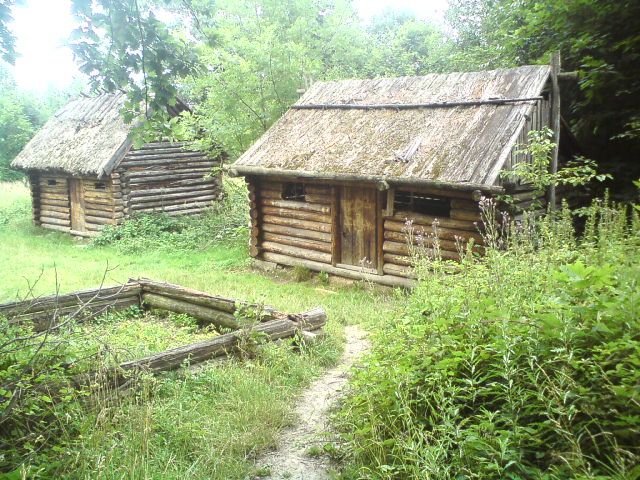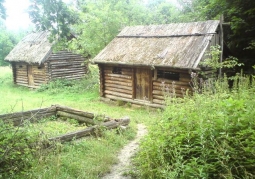Archaeological Reserve - Będkowice
No weather data
0.0 /5
Number of ratings: 0
The reserve covers the areas of the well-preserved Ślężany settlement complex, which functioned from the 8th to the 13th century. On about 50 ha of area we will see a stronghold and a barrow cemetery. A settlement museum in the form of two round log huts and a well was arranged on the stronghold. West of the stronghold we will find a place of archaeological meetings with a shelter, a hearth and an exhibition exhibition. On the northern side of the stronghold there is a small cult circle, a causeway with a medieval pond and an external embankment. The barrow cemetery contains about 7 barrow mounds - conical earth mounds. Some of the mounds were reconstructed and fenced. The main entrance to the reserve leads through a gate in a palisade with wooden figures of Piast warriors.
Komentarze
No results
Nearby places
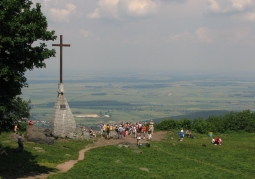
Góra Ślęża - Góra Ślęża Nature Reserve - Ślężański Landscape Park
Category: Peaks and valleysThe highest peak of the Ślęży Massif and the entire Przedmieście Foothills, built mainly of granite and gabra, rising to a height of 718 m a.s.l. From the 5th to the 8th century BC it was a sacred mountain of the...
4 km
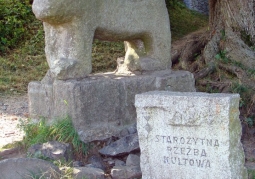
Bear - Góra Ślęża - Góra Ślęża Nature Reserve
Category: MonumentsAlso called Boar. One of several statues - probably Celtic, located on the top of Ślęża. During the Christianization period, in medieval times, the custom of throwing sculptures (intended to symbolize Evil) with...
4 km
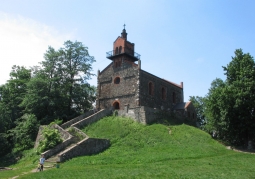
Church on Ślęża - Góra Ślęża - Góra Ślęża Nature Reserve
Category: ChurchesThe church's history dates back to the early 12th century during the reign of Bolesław III. In the second half of the 16th century, the Augustinians built a wooden chapel on the ruins of a pre-existing castle. In the...
4 km
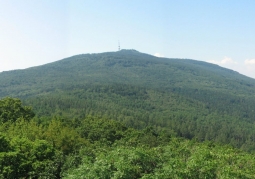
Góra Ślęża Nature Reserve - Ślężański Landscape Park
Category: Nature reservesIt covers an area of 141.4 ha, covers, among others the top of Ślęża. It was created to protect historical monuments and landscape values located in the vicinity of the said peak. In addition, it protects...
4 km
Nearby places

Góra Ślęża - Góra Ślęża Nature Reserve - Ślężański Landscape Park
Category: Peaks and valleysThe highest peak of the Ślęży Massif and the entire Przedmieście Foothills, built mainly of granite and gabra, rising to a height of 718 m a.s.l. From the 5th to the 8th century BC it was a sacred mountain of the...
4 km

Bear - Góra Ślęża - Góra Ślęża Nature Reserve
Category: MonumentsAlso called Boar. One of several statues - probably Celtic, located on the top of Ślęża. During the Christianization period, in medieval times, the custom of throwing sculptures (intended to symbolize Evil) with...
4 km

Church on Ślęża - Góra Ślęża - Góra Ślęża Nature Reserve
Category: ChurchesThe church's history dates back to the early 12th century during the reign of Bolesław III. In the second half of the 16th century, the Augustinians built a wooden chapel on the ruins of a pre-existing castle. In the...
4 km

Góra Ślęża Nature Reserve - Ślężański Landscape Park
Category: Nature reservesIt covers an area of 141.4 ha, covers, among others the top of Ślęża. It was created to protect historical monuments and landscape values located in the vicinity of the said peak. In addition, it protects...
4 km
